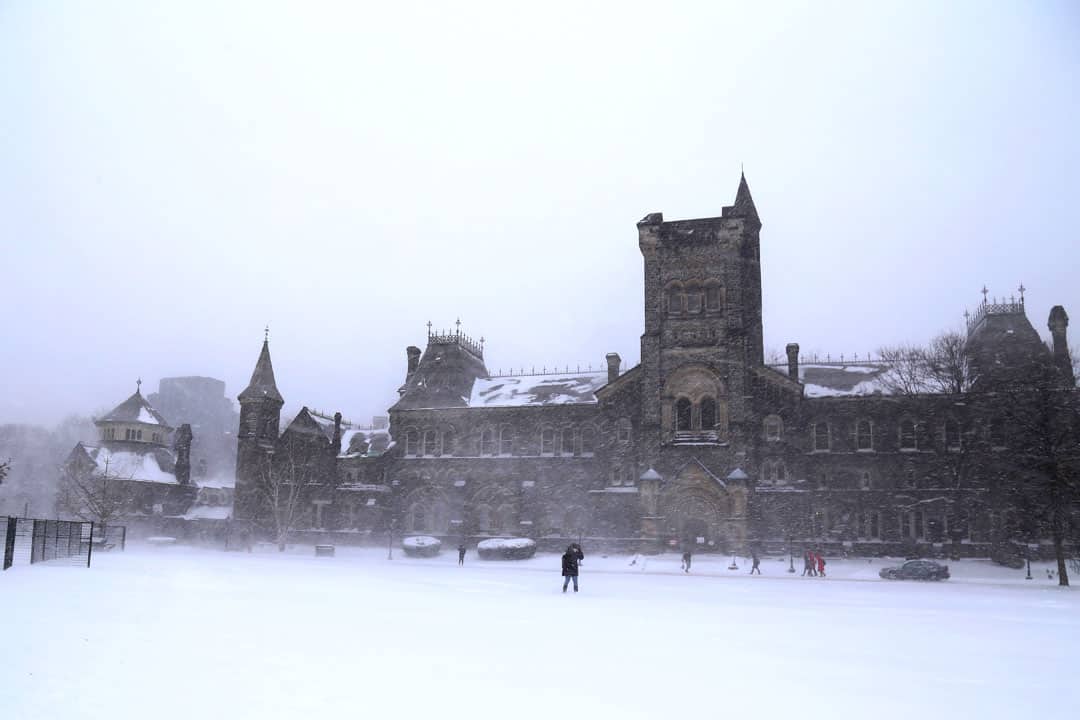On October 31, U of T’s Vice-President & Provost Cheryl Regehr and Vice-President, Human Resources & Equity Kelly Hannah-Moffat released a memo outlining new adjustments to its adverse weather closure policy, which commits to notifying students of closures and cancellations by 6:30 am through the communications department of each campus.
The memo follows widespread student outrage toward the school’s approach to weather-related closures and cancellations last winter — in particular, delayed notices to students and late closures relative to other universities in the Toronto area, as well as uncleared sidewalks. U of T reassures its students that it “will continue to listen to [the] community” as new information brings about opportunities for new policy and improvements.
Key changes to UTSG’s weather closure policy
The memo highlighted that the university will not only coordinate with other schools, but also with multiple transit systems when deciding whether to close the UTSG campus or not. In particular, U of T has committed to monitor the GO Train service and surrounding highways for closures and delays.
“We know that many members of our community face extended commute times to our campuses, especially in bad weather,” wrote U of T spokesperson Elizabeth Church to The Varsity. “For that reason, efforts will be made to announce any cancellations or closures by 6:30am.”
Updates will be posted to each campus’ homepage and on social media. The university also reminded students that updates can be accessed from the new U of T alert system. Students can subscribe to the system and receive information on cancellations and closures through email or text message.
Campus closures and commuter students
In 2015, U of T participated in a study that focused on student transportation across 10 university and colleges called StudentMoveTO. “The population for postsecondary students is always underrepresented,” said Khandker Nurul Habib, an associate professor in the Department of Civil & Mineral Engineering at U of T and a co-applicant at StudentMoveTO, “because of very narrow population growth, and a significant portion of the student population lives in dorms and apartments, they are basically missed in terms of representation in regional household surveys.”
According to Habib, almost all participating schools allowed the study to access the entirety of its student population for random sampling, however, he claims that U of T only provided a limited sample.
“This survey is bold,” Habib said, “[it gives] a snapshot of your life… so it gives us information to do a lot of statistical exercises.”
“[This] can explain peoples and students’ reactions to different transportation systems.”
Comparing to other universities
U of T’s closure policy statement on its website notes that the school makes closure decisions with information from “University Operations and Real Estate Partnerships, Environment Canada, TTC, city and provincial police, and other relevant agencies and institutions, including [Toronto District School Board], Ryerson University, George Brown College and Sheridan College.”
Ryerson University decides campus and class closures through an internal assessment of weather conditions done by the director of integrated risk management advising the school’s vice-president, administration and finance, who, alongside the president to the provost and vice-president academic, will delegate the final decision.
OCAD University’s website claims that its weather policy is dependent on the school’s president or designate’s decision. George Brown’s website has no mention of its internal decision making procedure.


